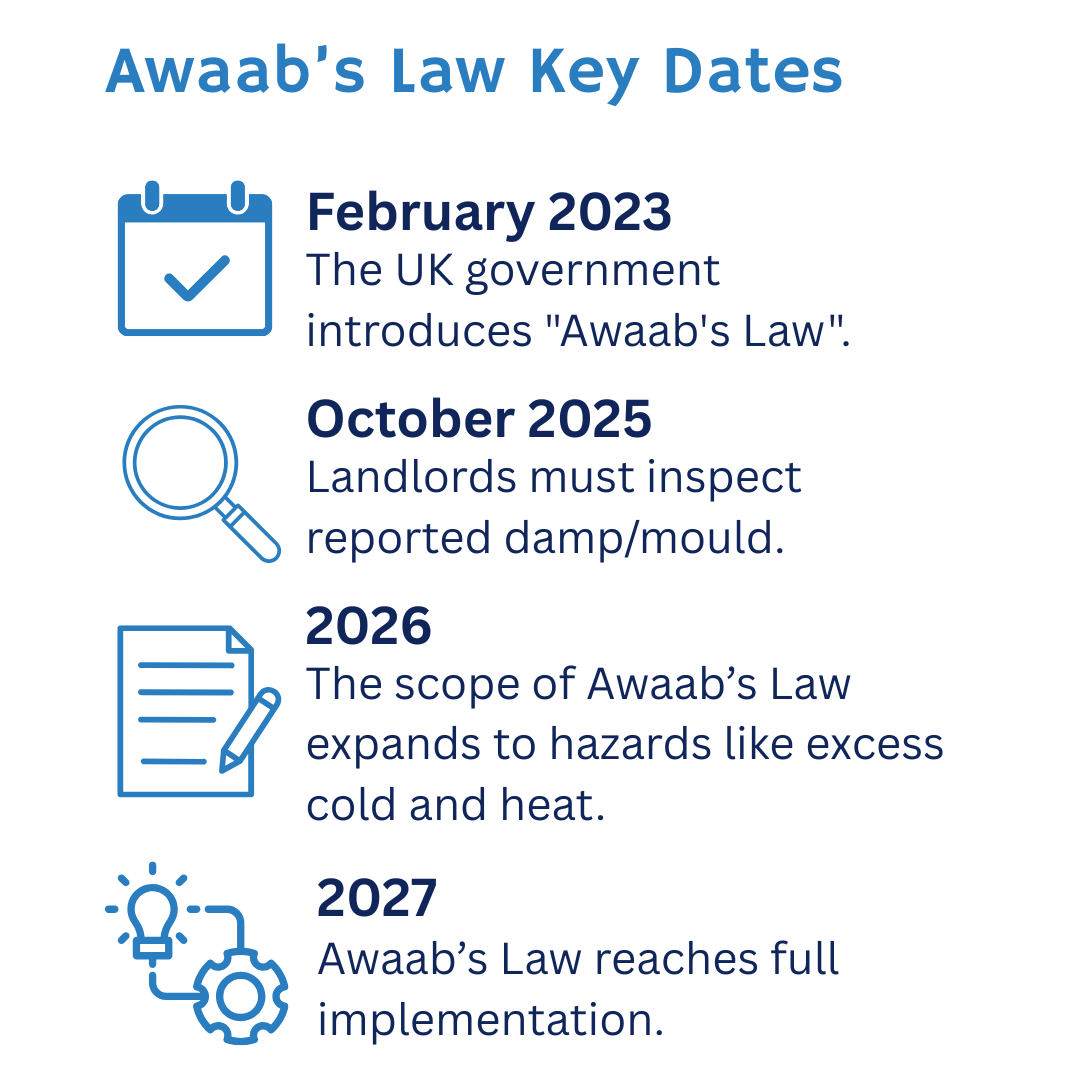As a landlord, keeping up with changes in housing legislation is part of the job - but some laws mark a turning point.
Awaab’s Law, introduced in 2023, is one of them.
It's a game-changer for how social landlords handle mould, damp, and other hazards. If you’re unsure what this means for you or your properties, this post will break it down: why it matters, what it involves, how to comply, and when it takes effect.
Why Awaab’s Law Was Introduced
Awaab’s Law is named in memory of Awaab Ishak, a two-year-old boy who tragically died in 2020 due to prolonged exposure to mould in his home. His death sparked a national outcry, revealing a gap in how social landlords were held accountable for dealing with serious health hazards.
The law aims to prevent such tragedies from happening again — by making it a legal requirement to take timely action against dangerous conditions like damp and mould.

In short: it’s about protecting tenants and ensuring every home is a safe one.

To stay on the right side of Awaab’s Law, landlords should:
Act Fast on Complaints: Take tenant concerns about mould, damp, or poor ventilation seriously — and record all complaints.
Document Everything: Keep a clear timeline of inspections, communications, and repair work.
Have Contractors on Call: Build relationships with reliable contractors who can respond quickly.
Inspect Regularly: Don’t wait for tenants to complain — proactive maintenance helps prevent issues and build trust.
Educate Tenants: Let them know how and when to report hazards, and what they can expect from you in response.
What Awaab’s Law Requires
At its core, Awaab’s Law introduces strict timeframes for landlords to address hazards once a complaint is made. Specifically:

Need help preparing for Awaab’s Law?
We’ll shortly be covering a practical checklist for landlords around different types of ventilation systems, their suitability, and long-term proactive strategies to keep mould and condensation at bay.
This will include guidance on key systems such as Extractor Fans, Mechanical Extract Ventilation (MEV), Positive Input Ventilation (PIV), and Mechanical Ventilation with Heat Recovery (MVHR).
We’ll also provide checklists to support property surveys, along with best practice recommendations for ongoing servicing and maintenance—helping you stay compliant while ensuring a healthy indoor environment for tenants.
#ChangeForGood
 Share
Share
Back to Blog